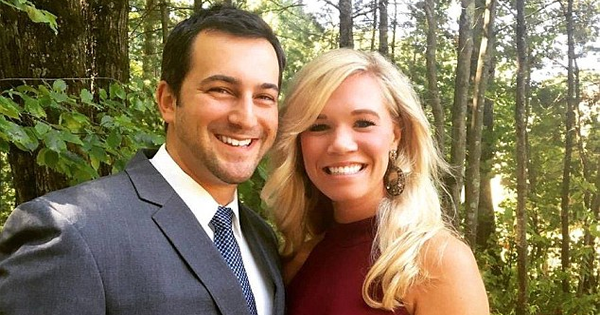When Sarah Porter was 20 years old and a college student at the University of Maine, she suffered her first stoke in the middle of her math class. “I went a bit foggy,” she recalled, “I didn’t think anything of it, I thought I was a bit tired.”
But then the girl next to her in class asked, “Are you okay? I think you just had a seizure, your face was twitching and you passed out.”
Porter, however, dismissed her classmate’s concern and said that she was fine – until she tried to stand and realized that her entire right side had lost feeling. Her face suddenly burst into spasms and she felt a splitting headache develop.
She managed to make it back to her dorm room, where she quickly dialed her parents, both of whom are doctors. They confirmed Porter’s classmate’s suspicions and ordered their daughter to go to the ER immediately for help.
At the ER, Porter’s brother came to join her, and it was a good thing he did show up, because the triage nurse didn’t believe Porter’s account at all. “No way, you’re too young, there’s no way you’re having a stroke,” the nurse had said to Porter. “You just want to skip your exams.”
What’s terrifying to hear about Porter’s story is that she almost let the nurse convince her of this. “I didn’t think I could have a stroke that young either,” she admitted later.
That was when Porter’s brother stepped in and began to argue with the nurse. He ended up creating a large enough scene that a nearby doctor stopped by to see what was happening – before immediately calling for emergency attention for Porter.

Porter didn’t have a minute to spare.
For the next 24 hours, Porter has no recollection of what happened to her. She simply woke up, still in the hospital, with the news that she had suffered from a hemorrhagic stroke, an uncommon type of stroke. Unlike the more common ischemic stroke, that is caused by a blood vessel that blocks a part of the brain from receiving blood due to a clog in the blood vessel, a hemorrhagic stroke occurs when a blood vessel actually ruptures, filling the brain with blood.
As it turns out, inside Porter’s brain was an abnormal cluster of blood vessels called an arteriovenous malformation, or an AVM, that had burst.
Porter was one of the lucky ones. Most people who suffer from hemorrhagic sufferers die within the first week of having their stroke and 75% of stroke survivors live with physical disabilities for the rest of their lives.
Following that first stroke, Porter was given a choice as to what her fate would be. Given that she was young, and she was able to get the problematic mass of blood vessels removed, she might never suffer from a stroke again in her life. Alternatively, doctors could remove her AVM to keep her body from suffering further strokes – but also risk derailing all the health progress she’d made so far.
It took Porter quite some time to decide, but she ultimately decided to have her AVM removed. It was a choice that left her paranoid for years.
“I was always thinking about it,” she admitted. “For years I just couldn’t stop thinking about it coming back, happening again. I only started to relax about three years later when I was heading to New York for grad school.”
Just when Porter had reassured herself that she couldn’t suffer another stroke again, another hit when she was just 24. This time, she knew immediately what was happening and was even able to walk herself to the Columbia Medical School campus and announce herself with, “Hi, my name is Sarah Porter, I had a stroke four years ago and I’m having one now.”
The nurses stabilized Porter as best they could before sending her off to Maine, to meet with her original neurosurgeon. They decided to remove Porter’s AVM in a surgical procedure, and thankfully, the complicated procedure went without a hitch – until Porter had returned home to recover.
She’d been practicing physical therapy and speech with instructional videos when one of her eyes swelled up and refused to improve its condition. Porter called her neurosurgeon again, and he immediately leapt into his car to tell her that he needed to operate, as soon as possible.

Porter had, somehow, contracted a dangerous brain infection from the first surgery and would need this second procedure to even survive. If she didn’t have it, there was a chance she would never finish grad school and become a neurosurgeon of her own.
This time, thankfully, the operation was successful. Doctors have confirmed that Porter will never suffer from another stroke, and though she has some lingering effects of the two strokes (like some lack of movement on the right side of her face), they’re hard to notice.
Now finally deemed in full health, Porter is thrilled to be finishing her higher education and then pursuing a job as a neurosurgeon at the Maine Medical Center’s new clinic – with the surgeon who ended up saving her life. “It’s a dream come true,” she admitted. “It’s so personal for me.”





